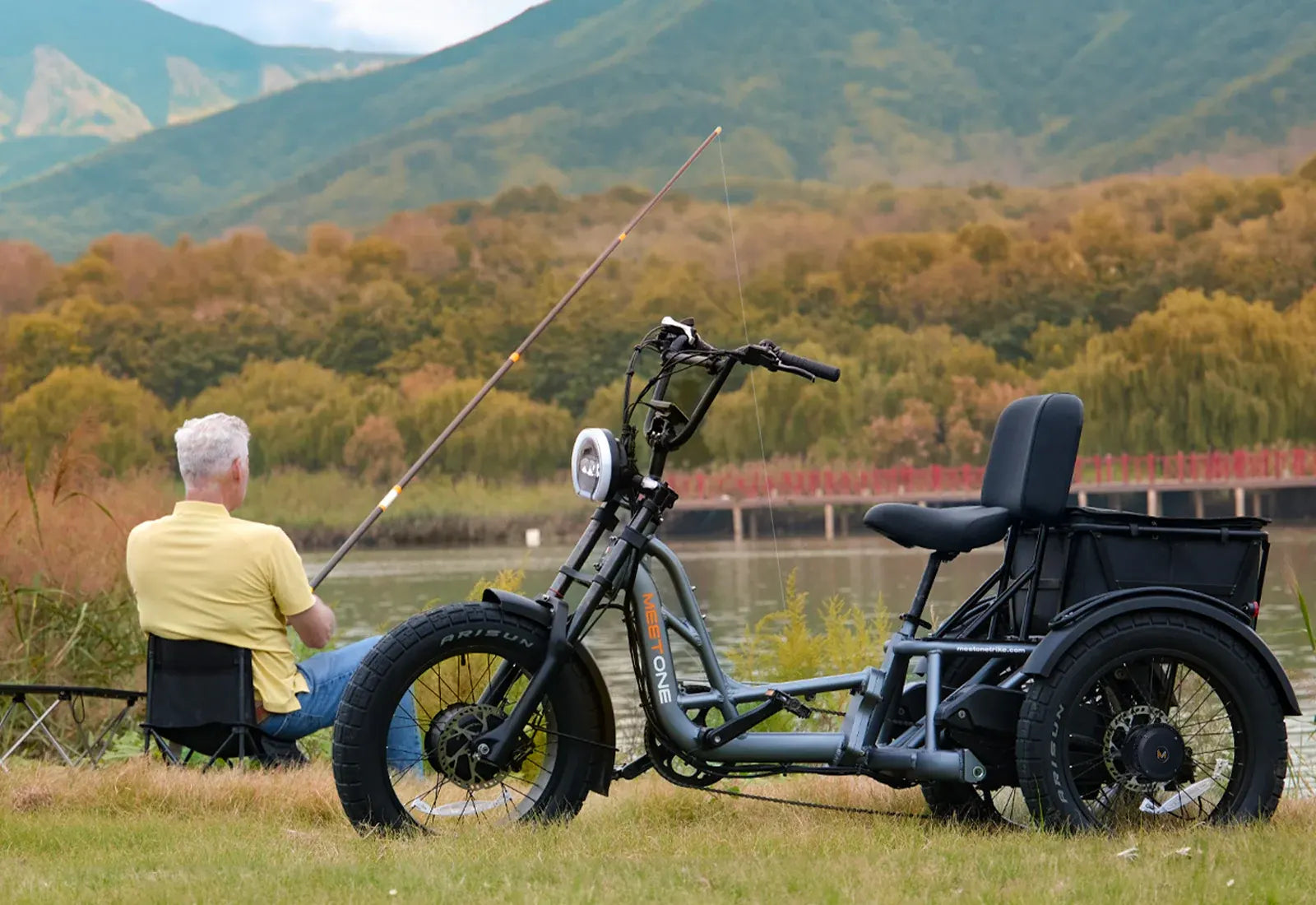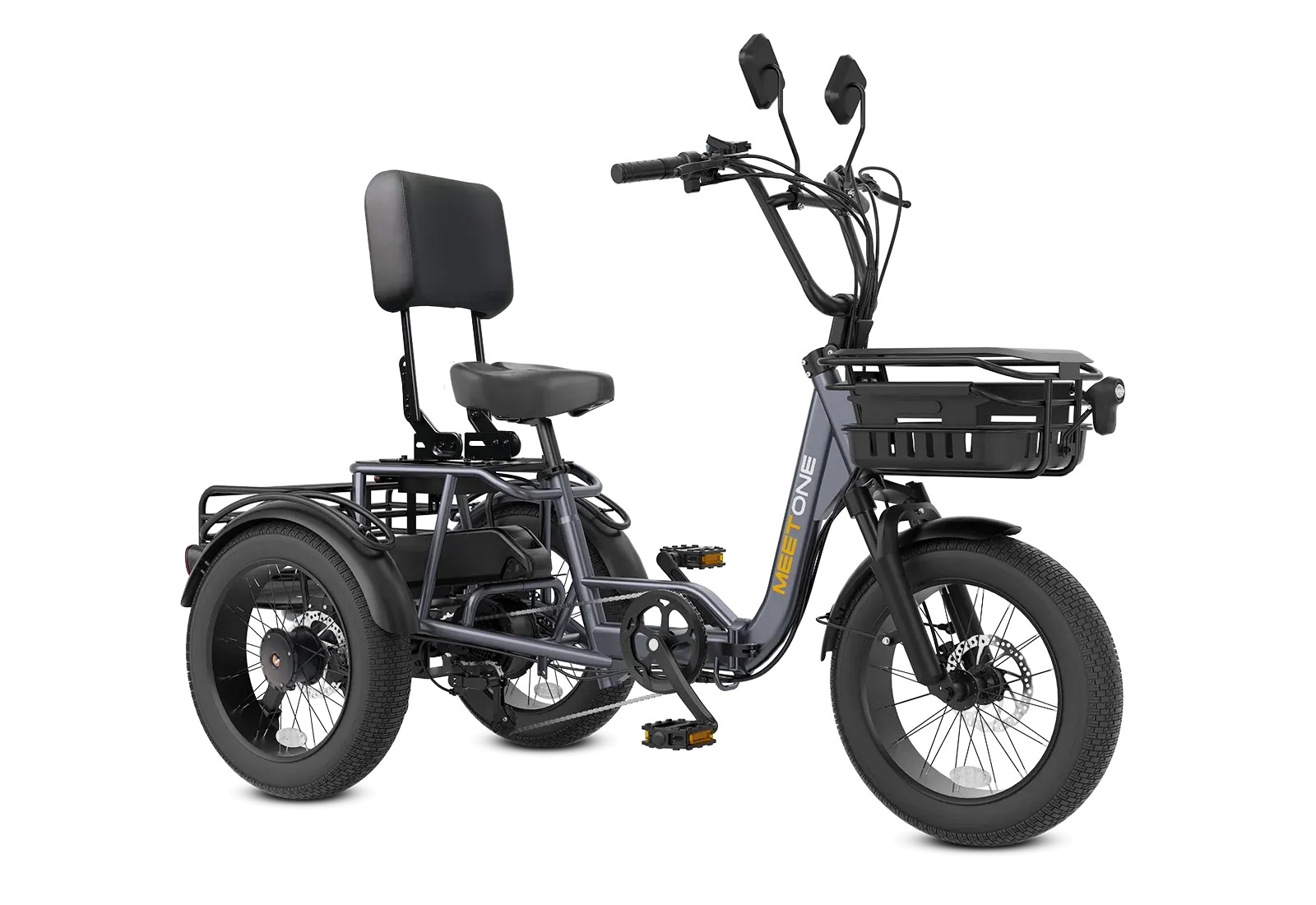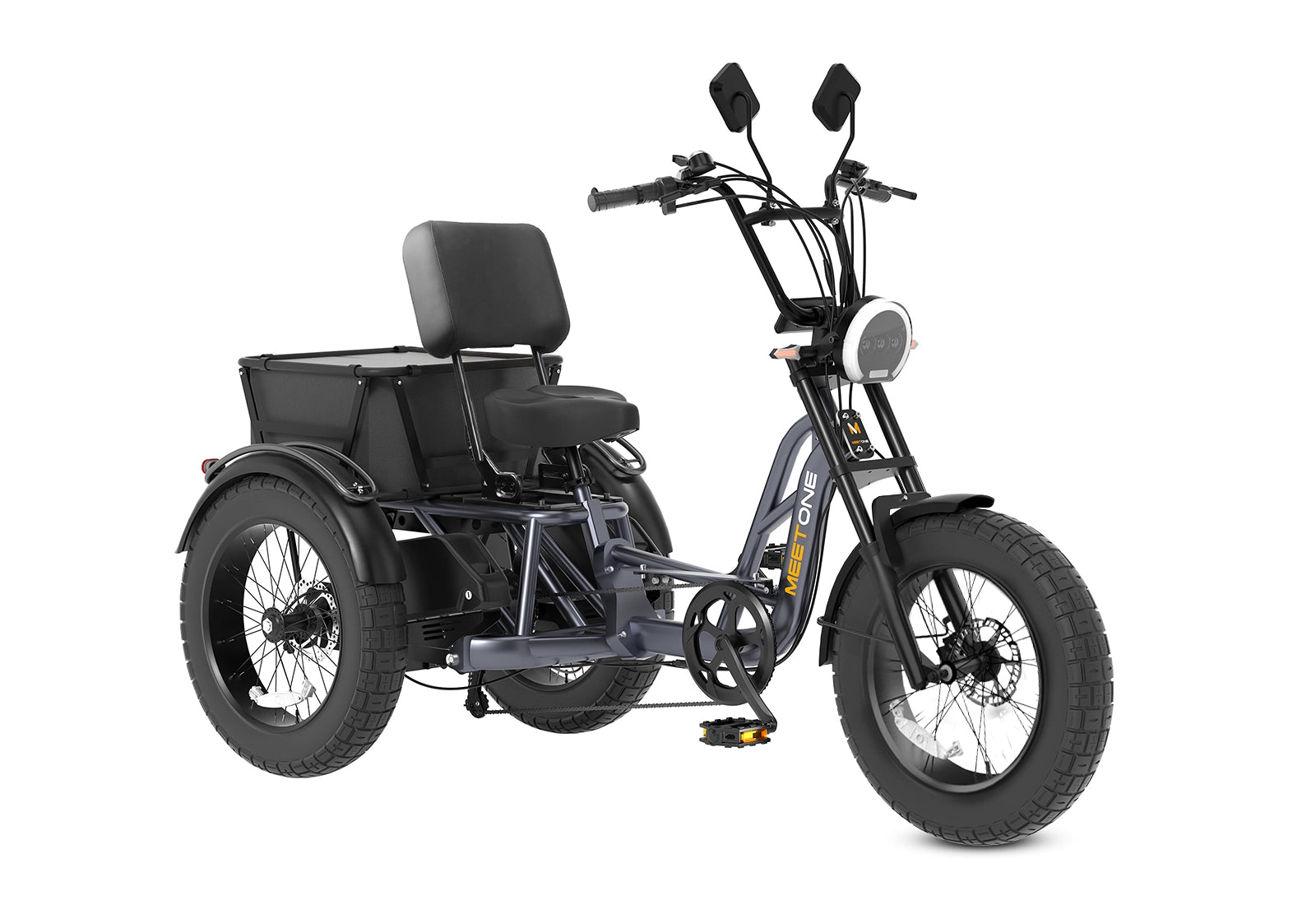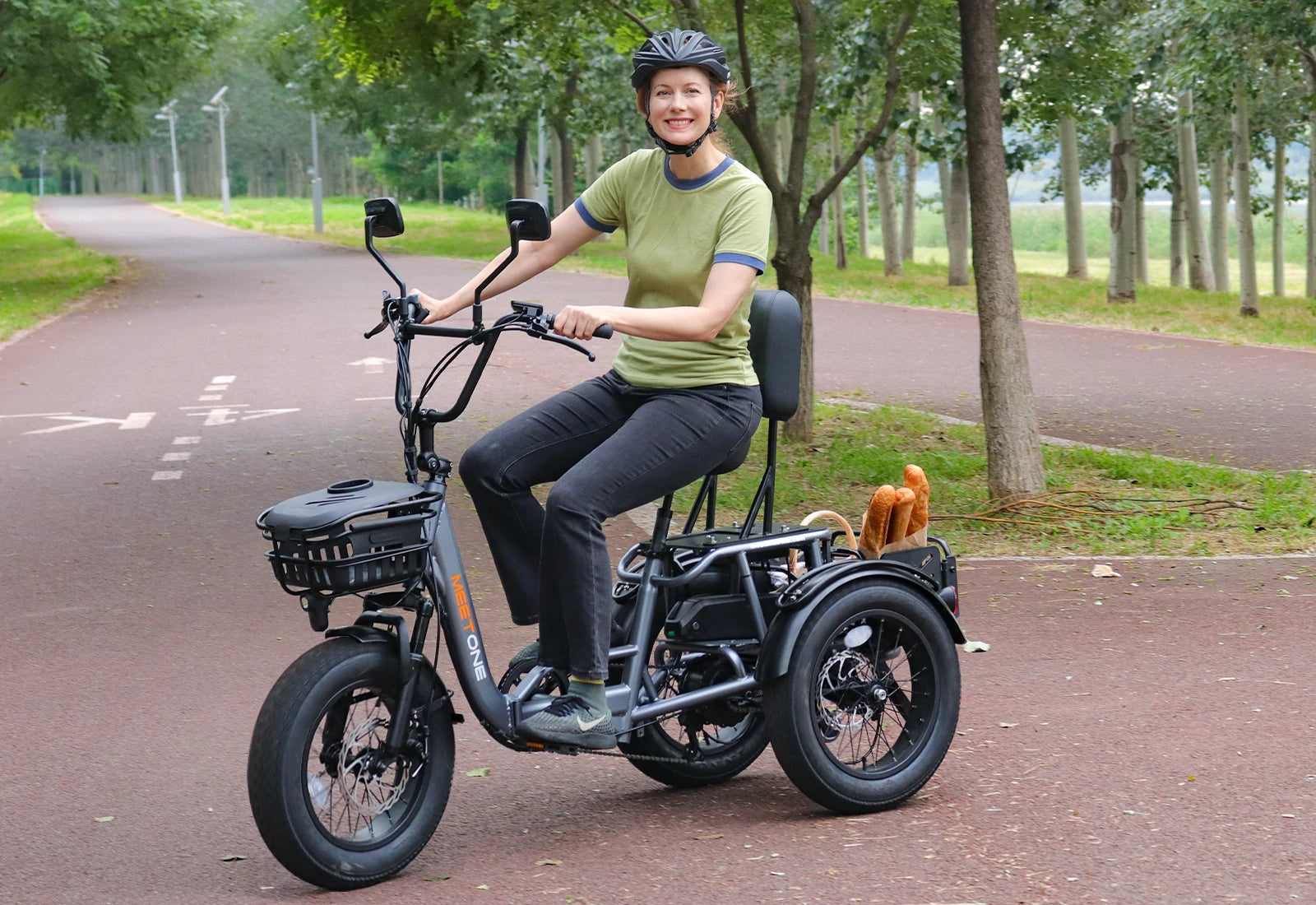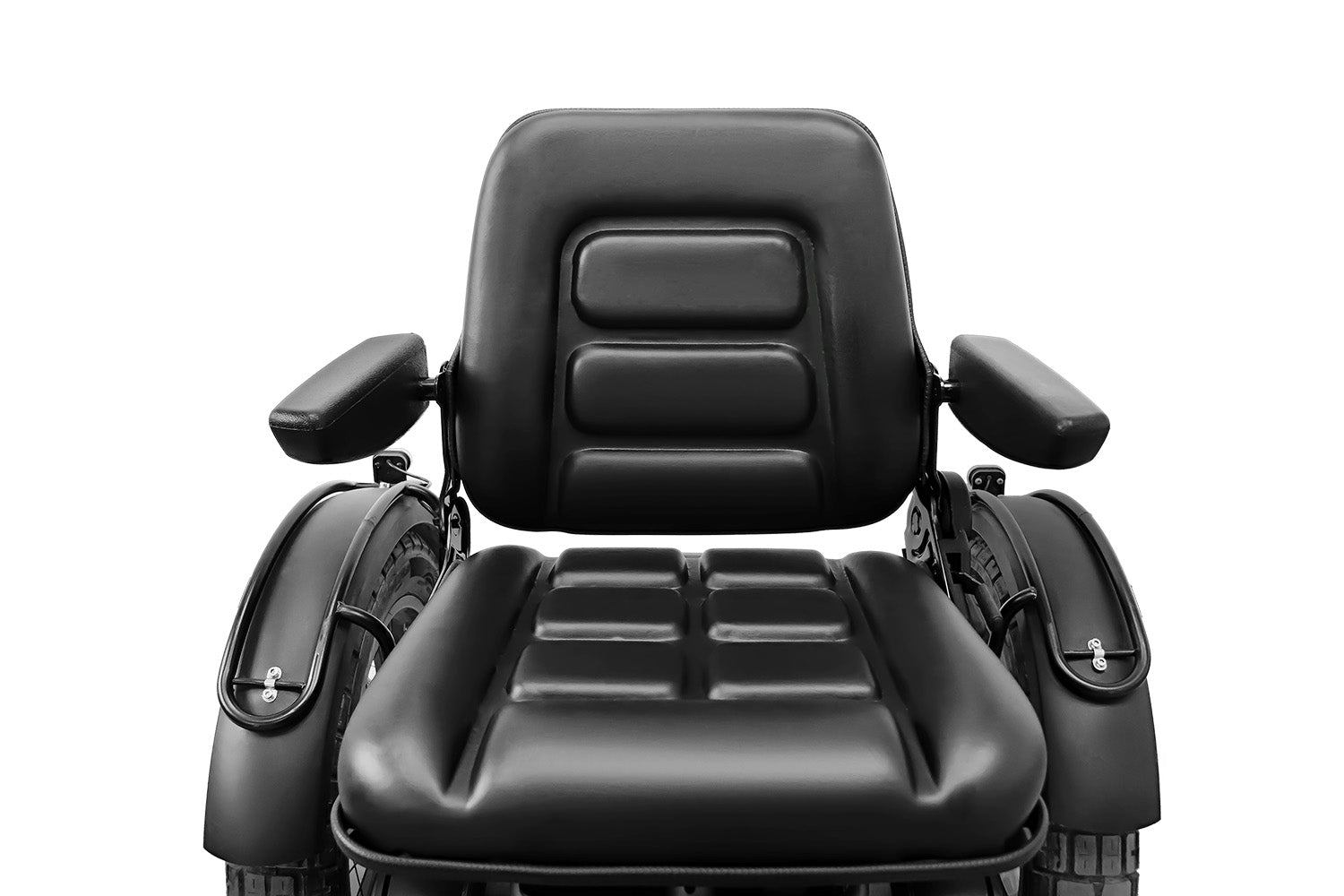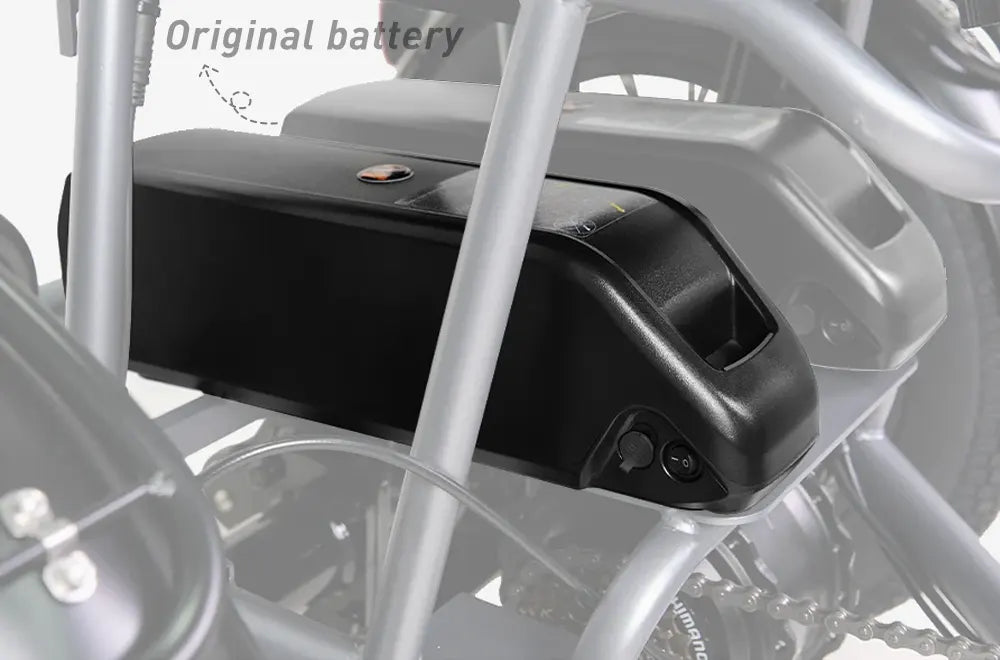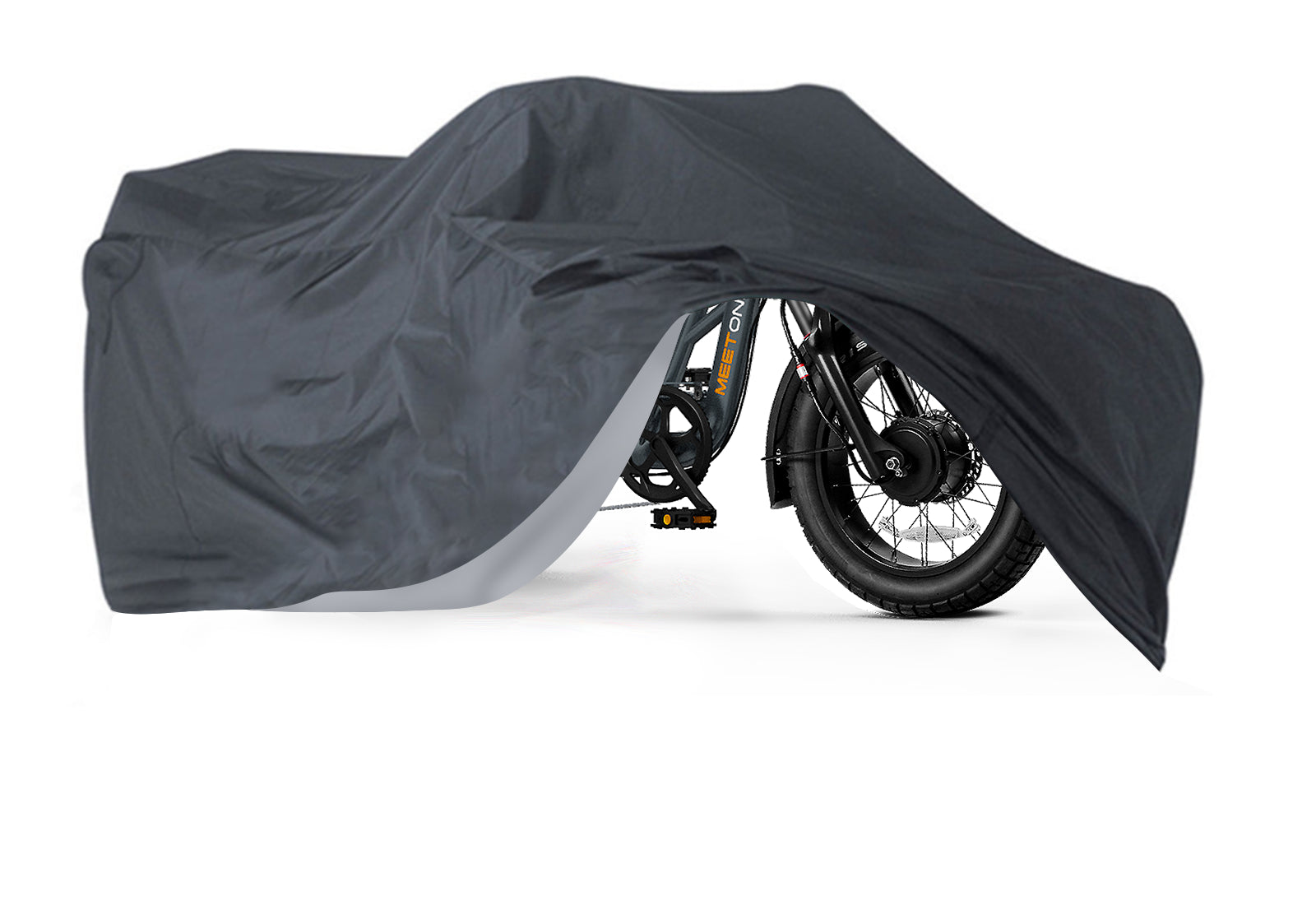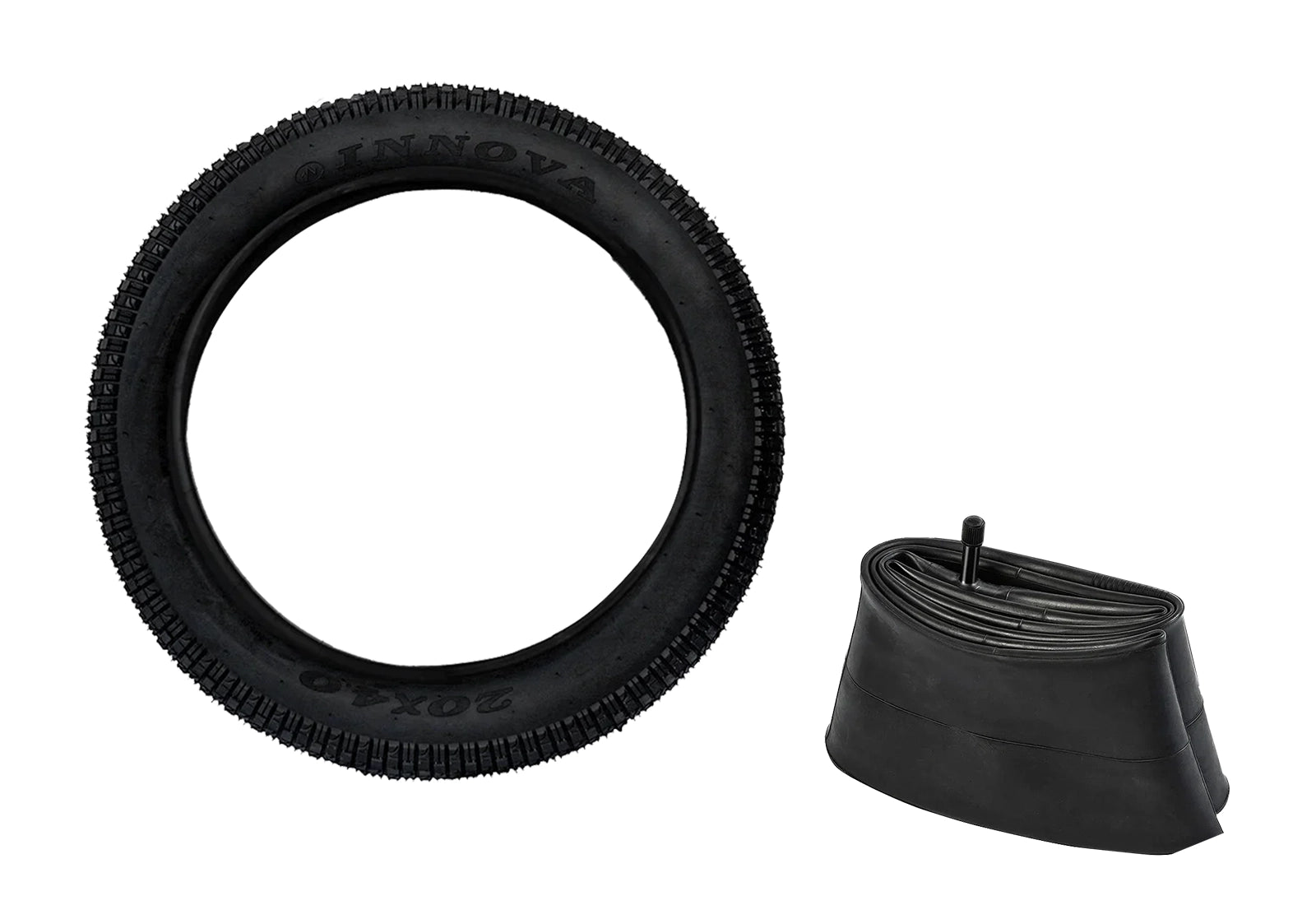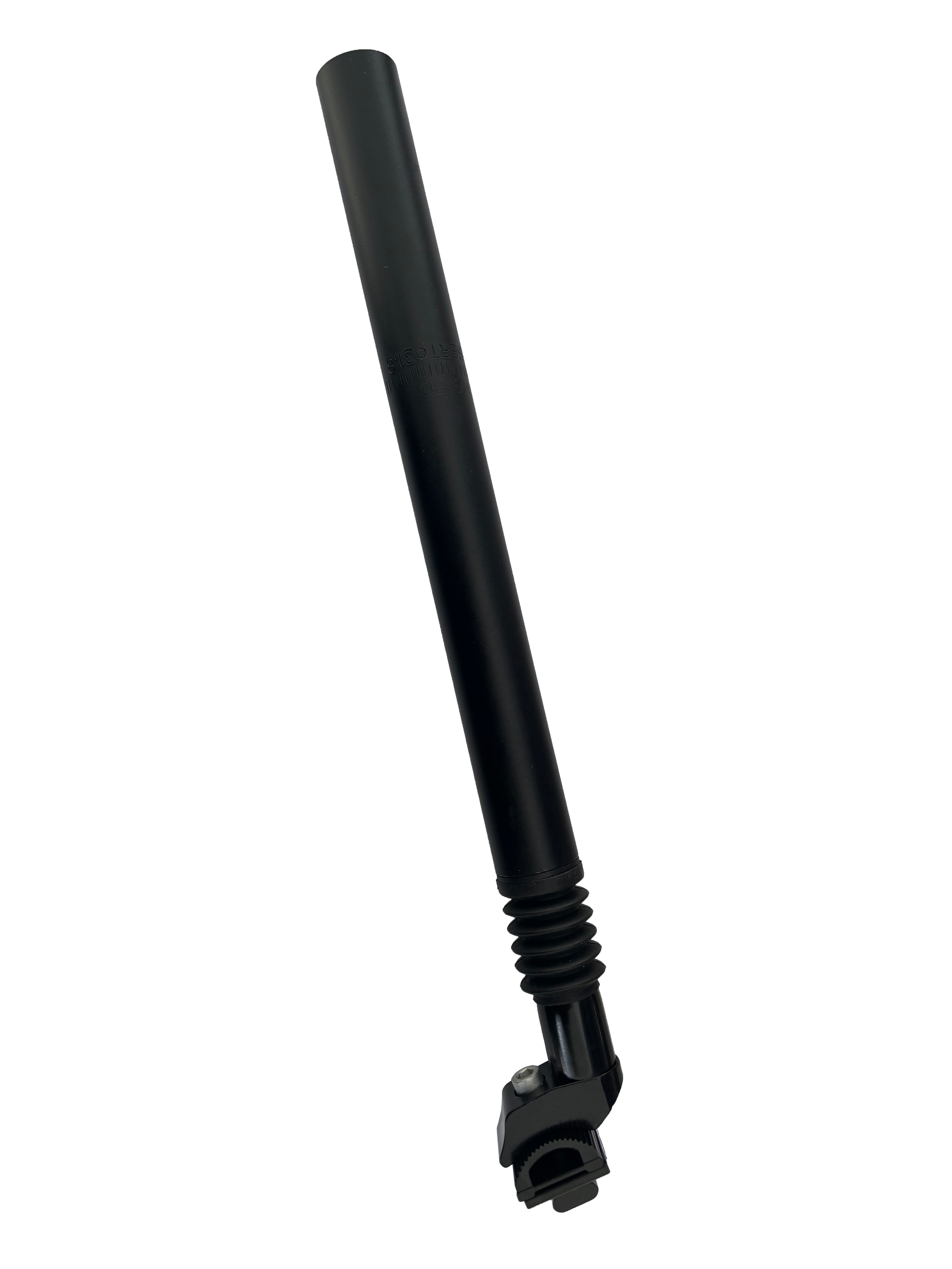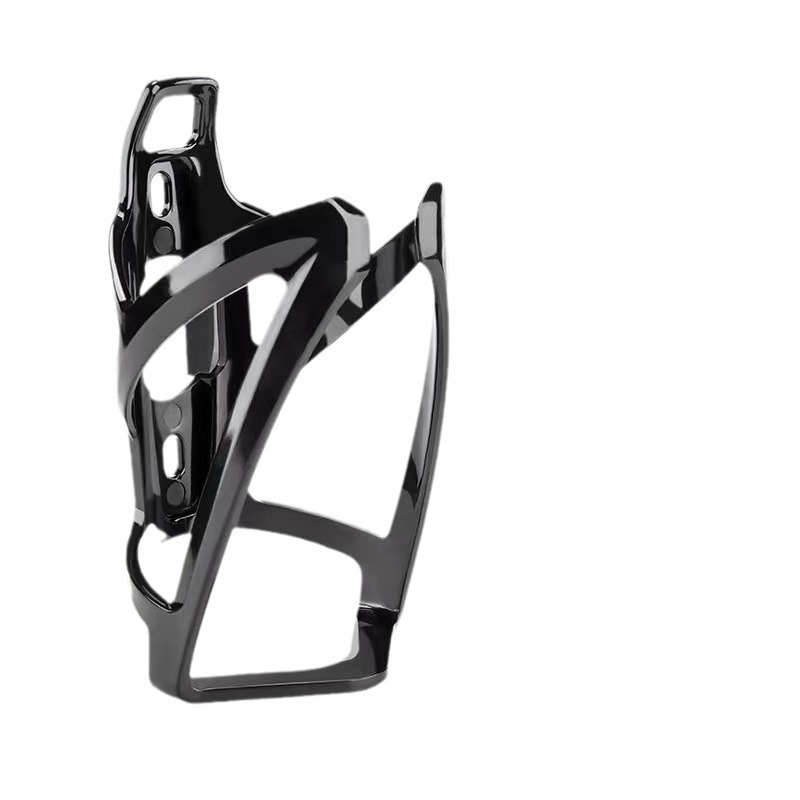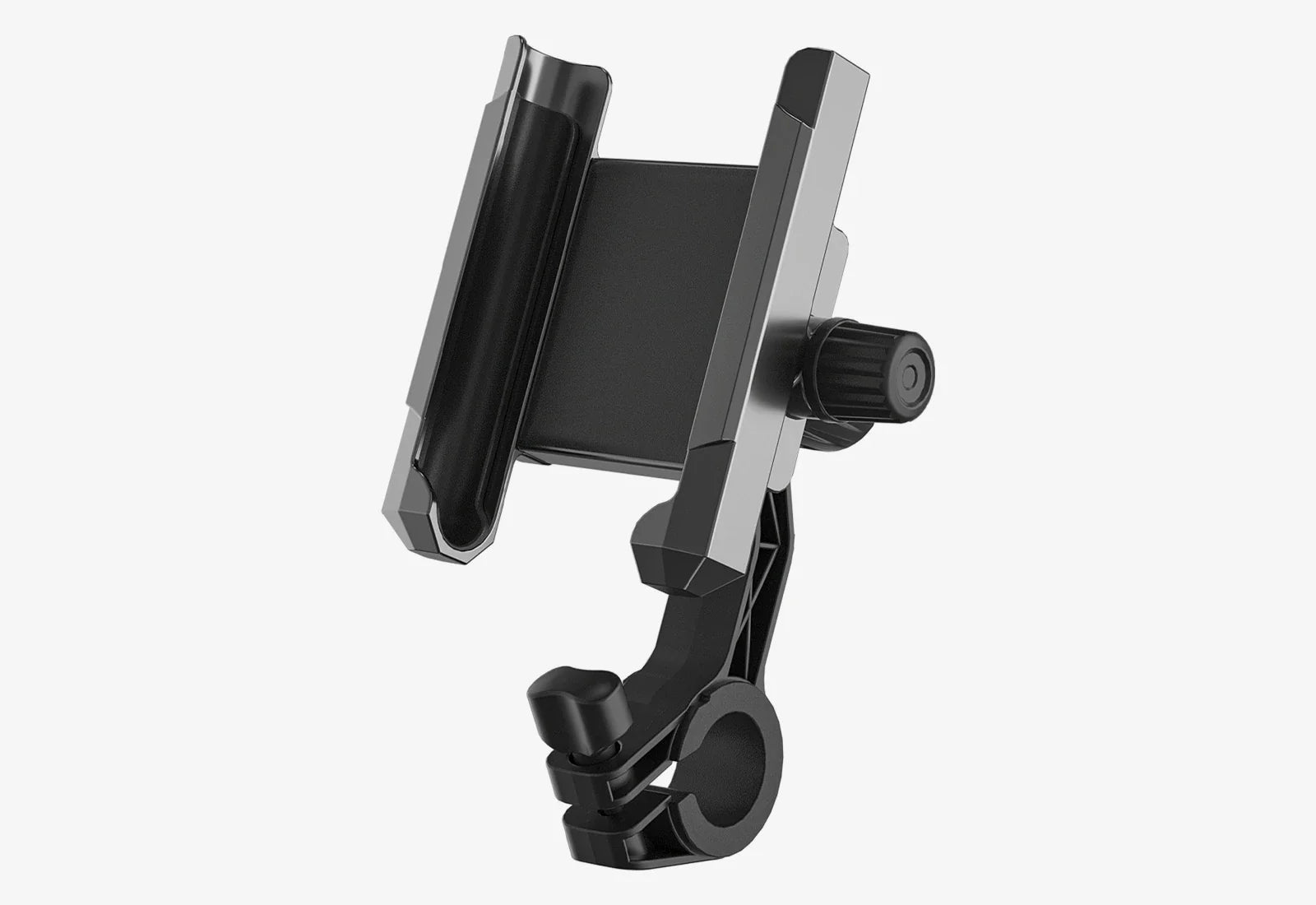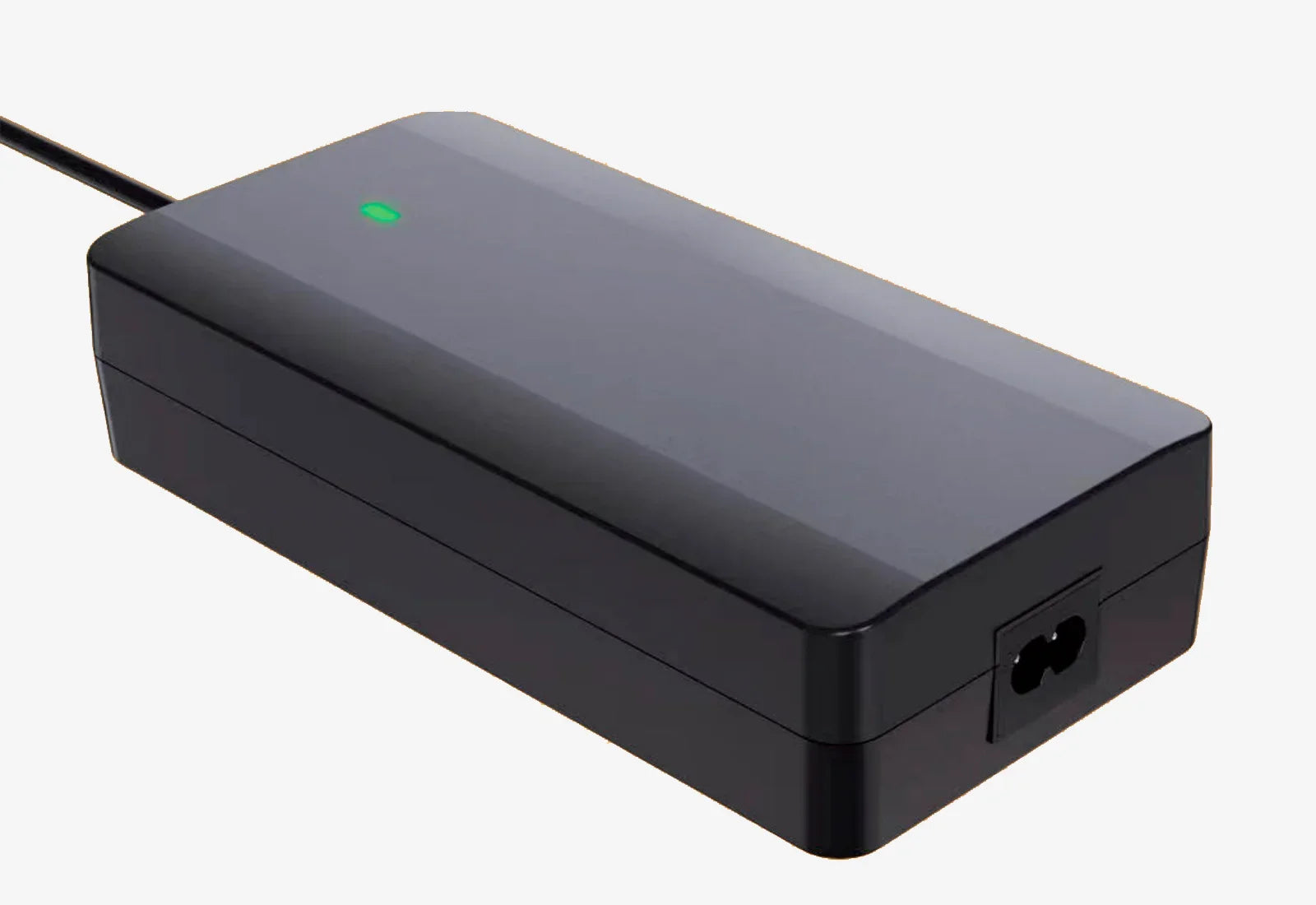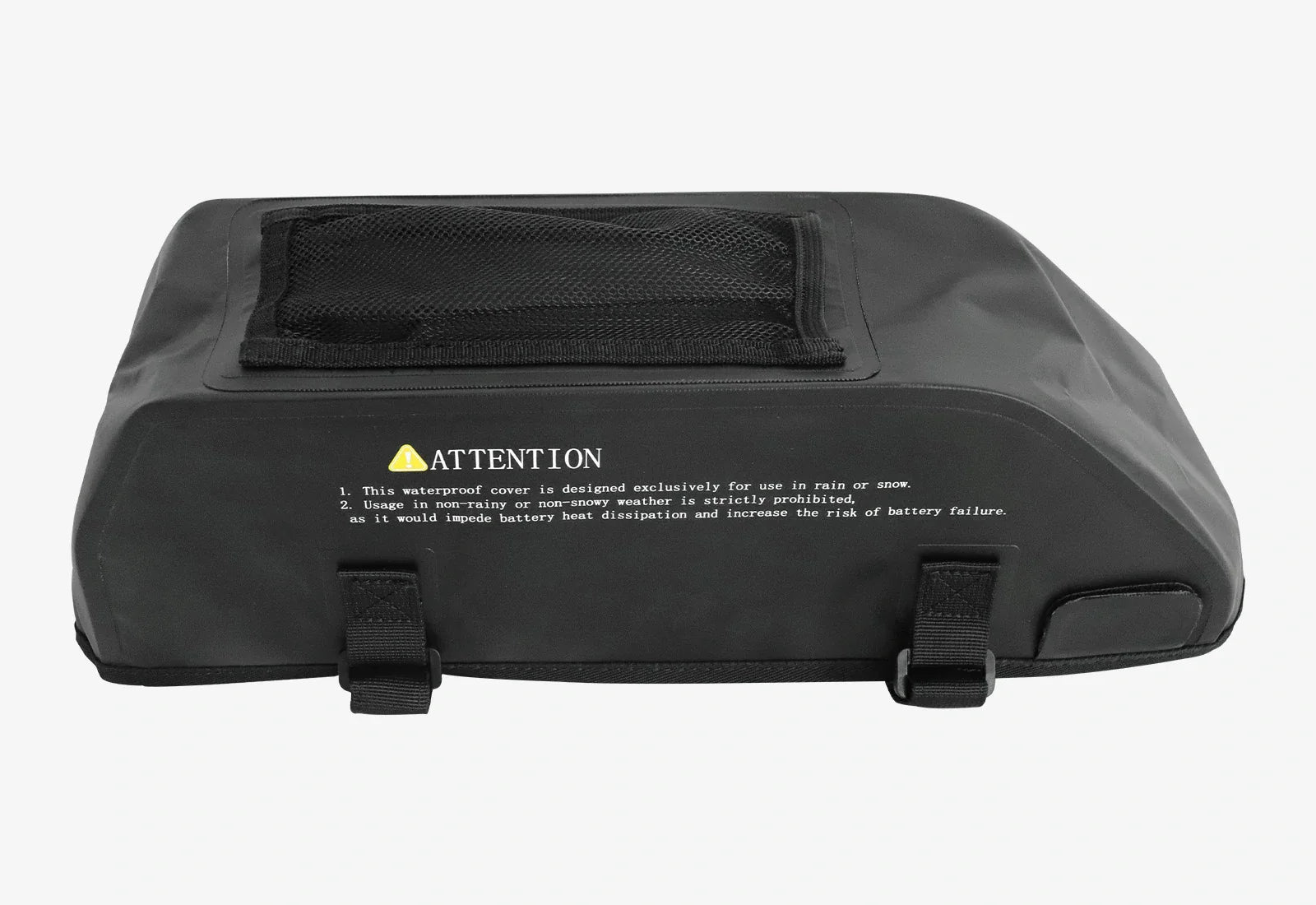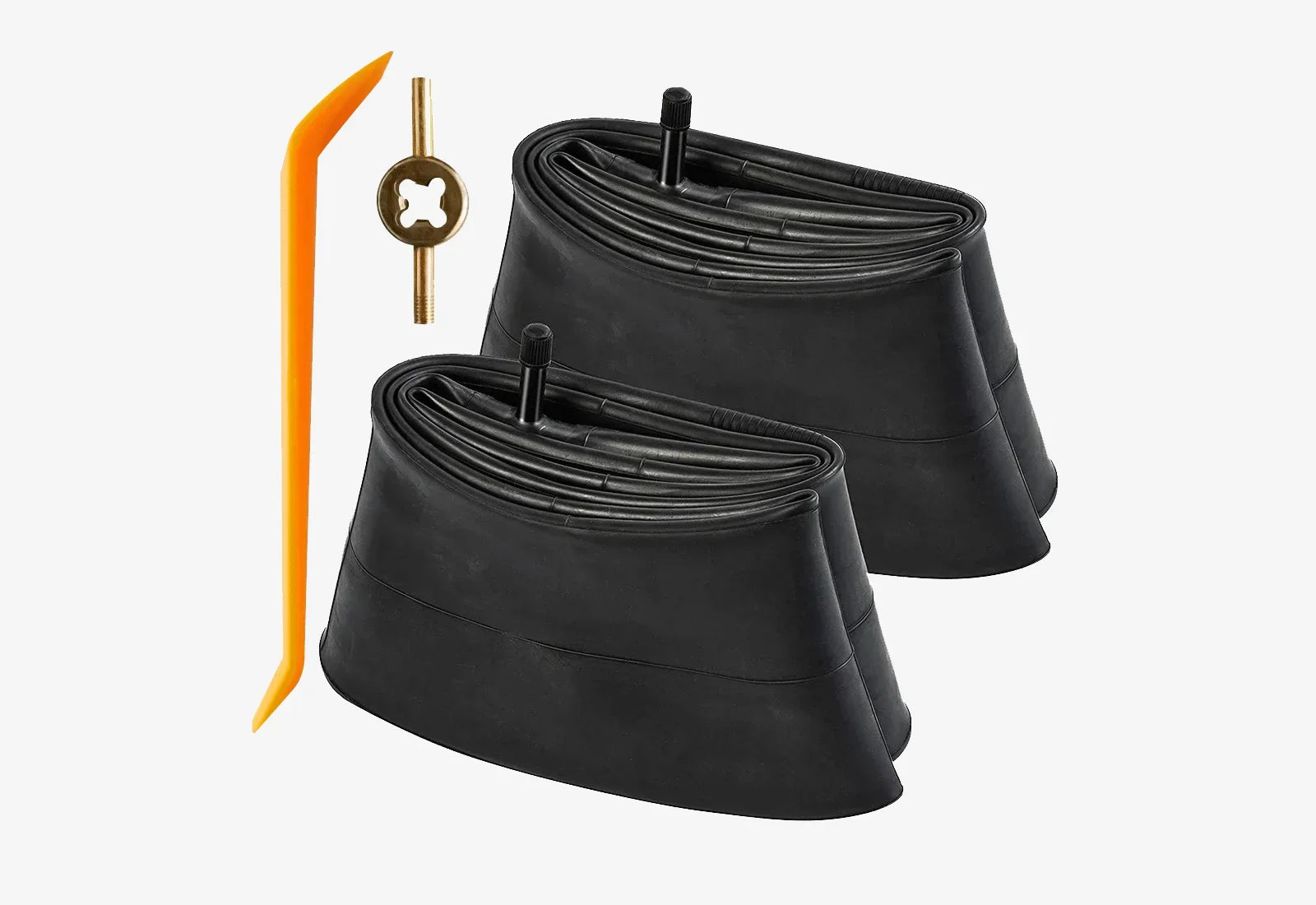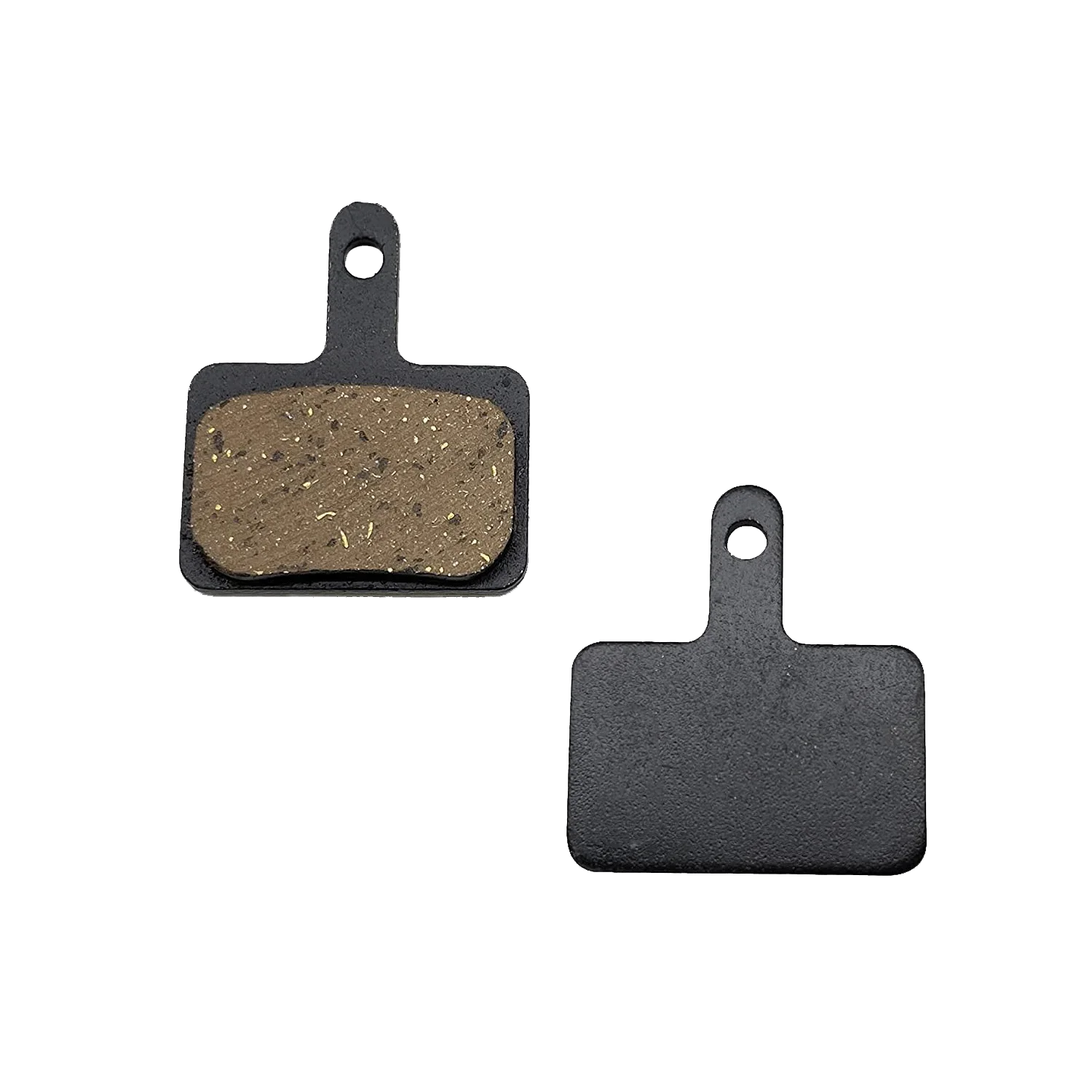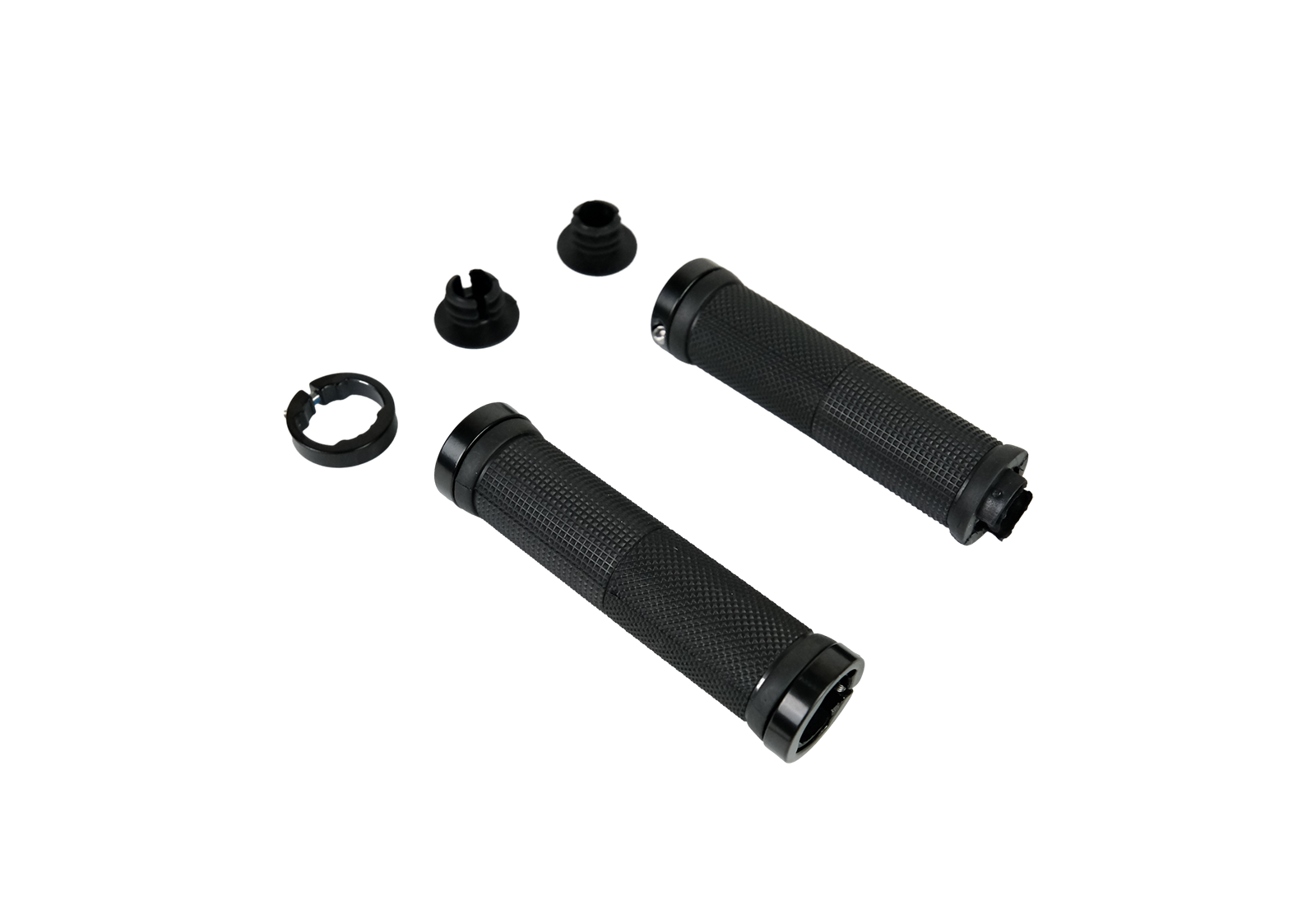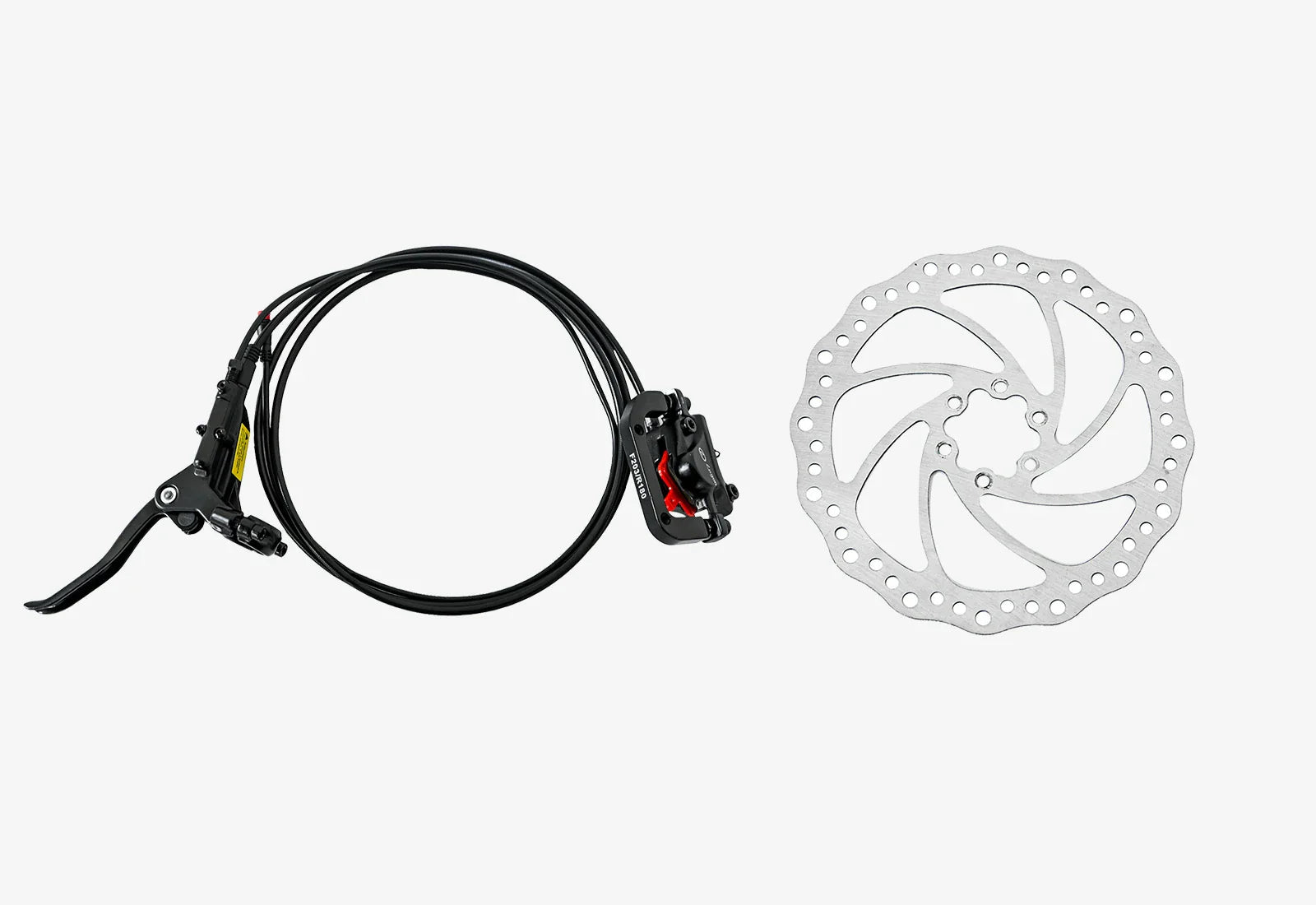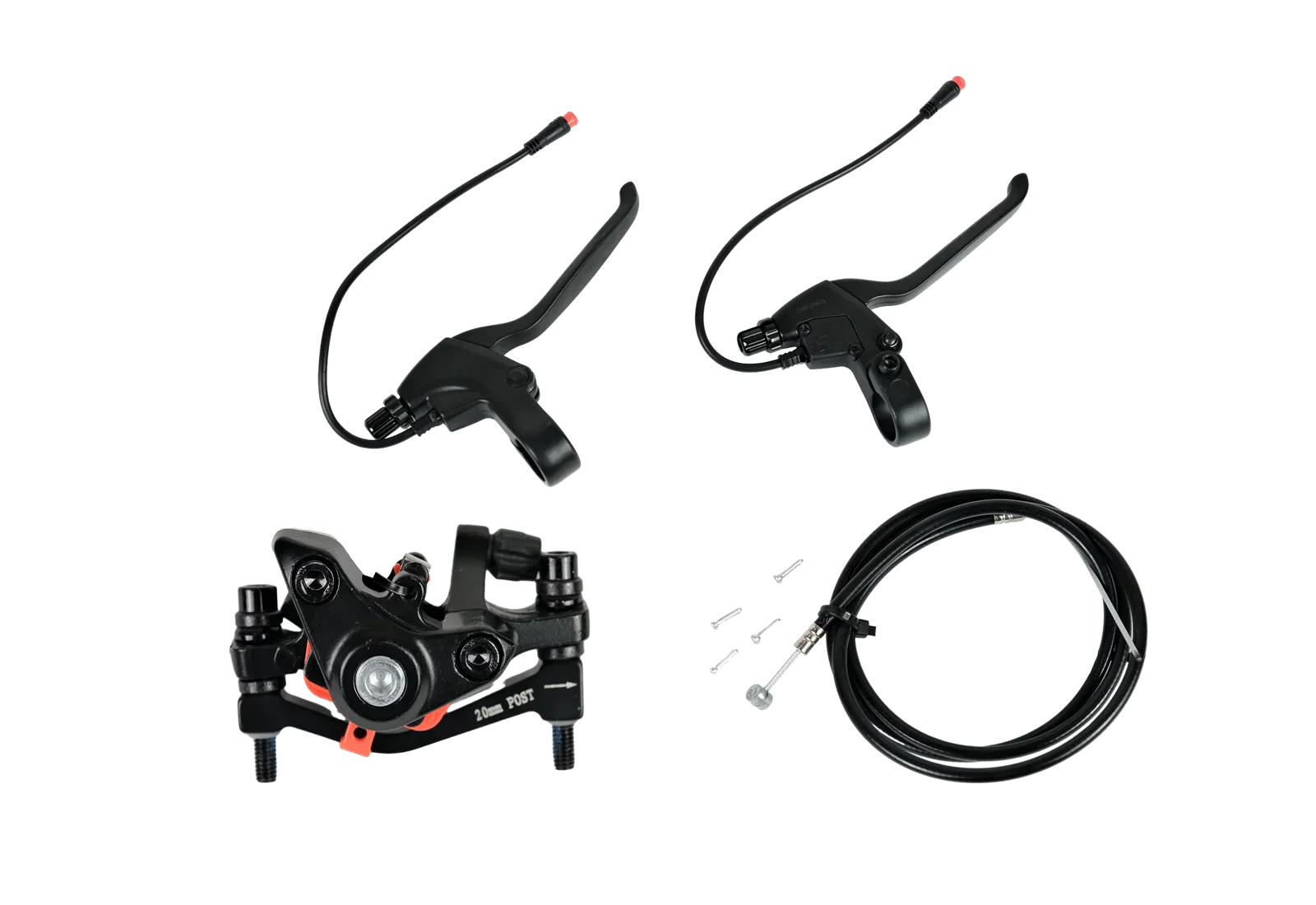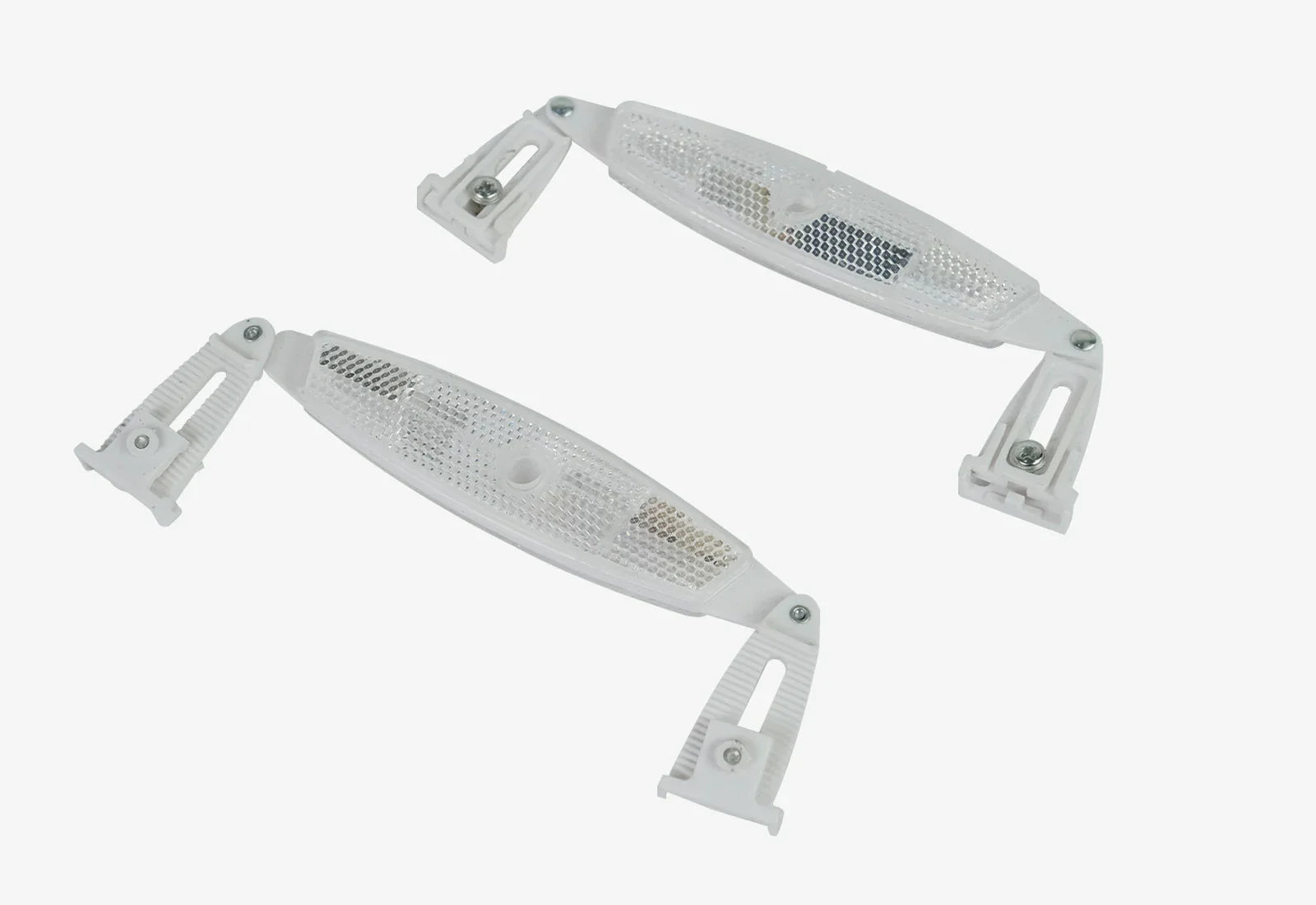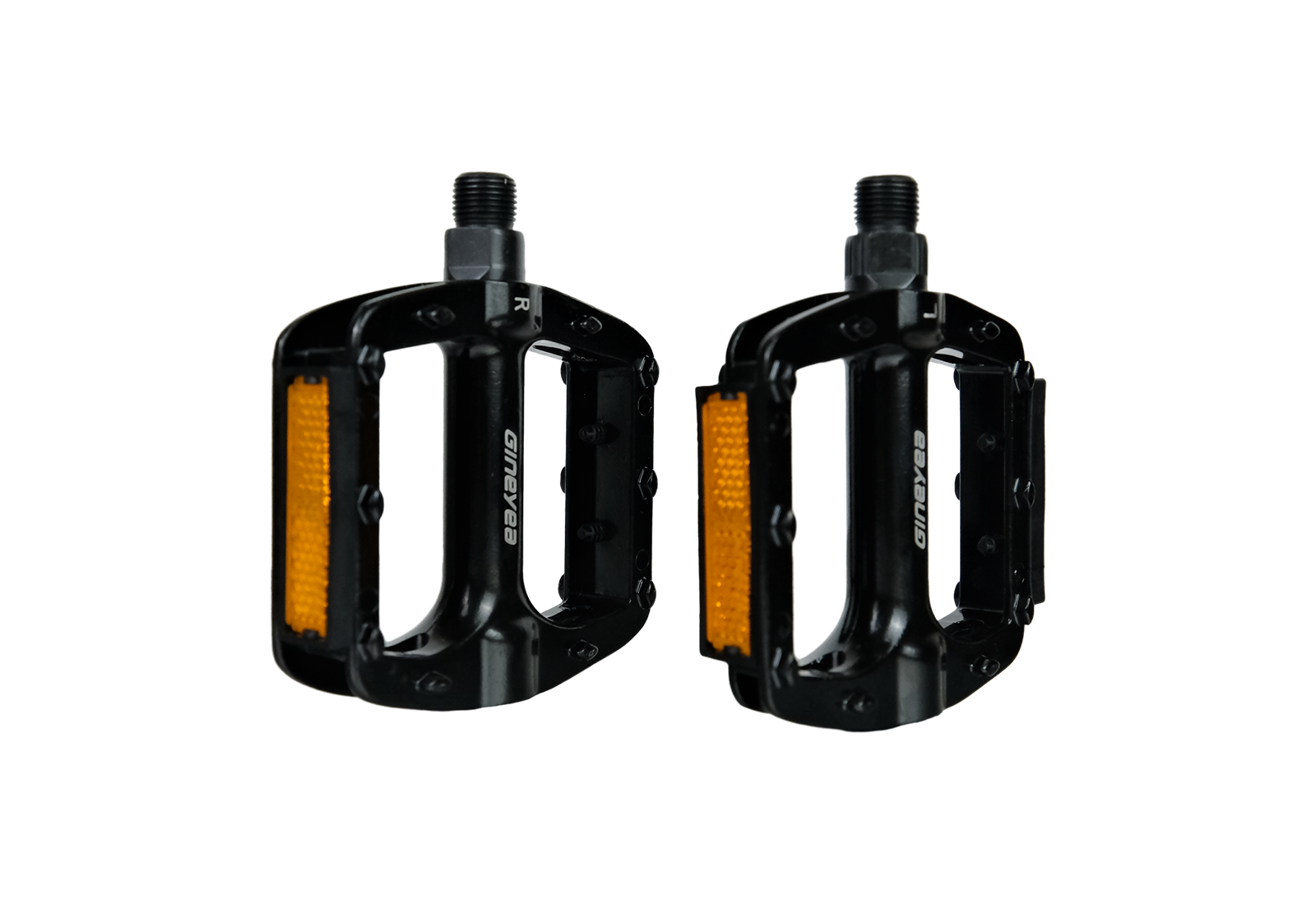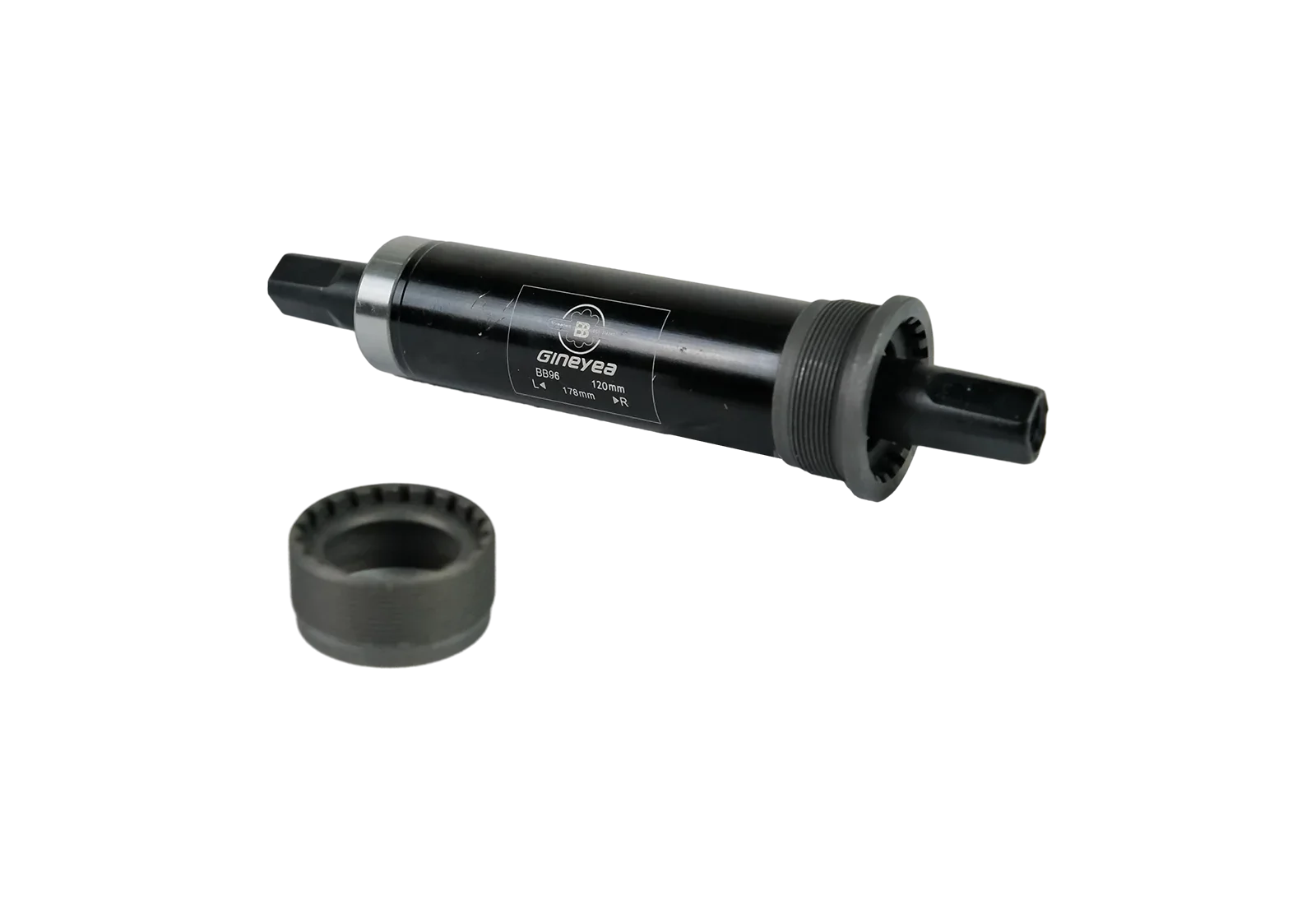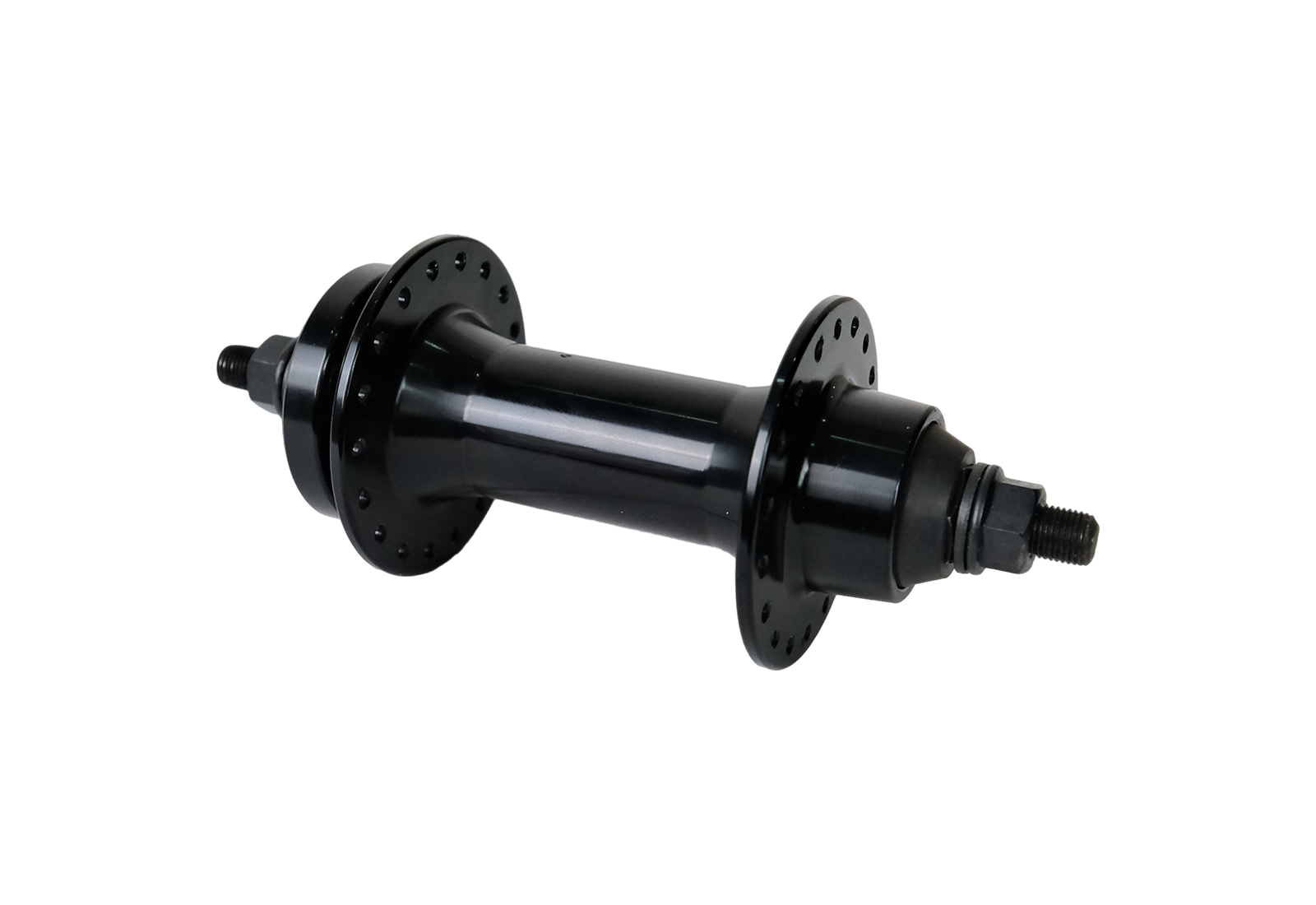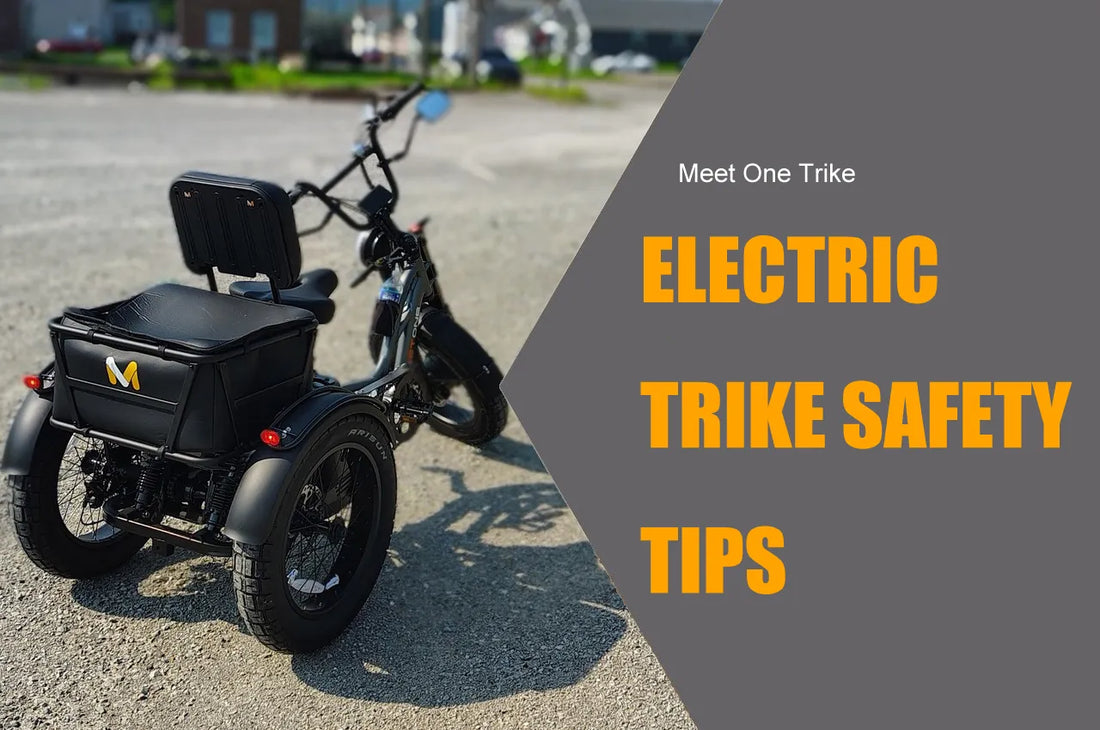
Essential eTrike Safety Tips Every Rider Should Know
Switching to a trike offers stability at a stop and a new way to enjoy cycling. But riding on three wheels brings challenges that two-wheel cyclists don’t face. Corners, slopes, uneven roads, and even stopping require different habits. This Playbook draws on the practical wisdom of seasoned riders to help you stay safe, avoid tipping, and enjoy every ride.
Mastering the Turn: Speed, Balance, and Control
Slow Before Every Turn: The most common cause of trike accidents is entering a corner too quickly. Unlike bicycles, trikes cannot lean to absorb momentum, so braking mid-turn destabilizes the chassis and lifts the inside wheel. Reduce speed before steering input, roll smoothly through the curve, and only accelerate once you’re upright again. Practicing this habit prevents tip-overs and builds safe instincts.
Lower Pedal Assist Before Corners: On e-trikes, high pedal assist in a turn can trigger sudden bursts of power from even a light pedal stroke. This surge often throws the trike off balance. Always reduce assist to a lower level before approaching curves, and save throttle use for straight launches from a stop. Smooth power management makes cornering predictable.
Steer With Handlebars, Not Your Body: Trikes respond to the handlebars, not body lean. Keeping your torso upright and arms steady allows the frame to track evenly through the curve. Wide, gradual steering arcs keep all three wheels grounded, while jerky movements or aggressive leaning destabilize the ride. Treat the handlebars as your control, not your hips.
Handling Slopes and Uneven Ground
Mastering Slopes and Cambers: To maintain stability on uneven ground, always shift your body weight to counteract the slope: lean right on a left-leaning camber, and vice versa. For steep hills, never attempt to traverse (ride straight across) the slope; this was many riders' very first lesson to avoid! Instead, for safety, always travel diagonally from one side to the other in a gentle zig-zag path. Learn more in How to Ride an Electric Trike Uphill.
Watch the Road Crown: Even mild road cambers shift balance toward one wheel. At higher speeds, this can cause the uphill wheel to lift. Stay alert, steer with small corrections, and lean slightly uphill to stabilize. Respecting even subtle road crowns keeps the trike firmly planted.
Cross Curbs at Right Angles: When rolling off a sidewalk or driveway, both rear wheels must drop together. Approaching diagonally risks dropping one wheel first and flipping the frame. Always square up to the curb at 90° and roll down evenly.
Go Slow on Rough Surfaces: Gravel, grass, and cracked pavement all reduce traction and control. Lower speed, keep hands steady, and allow the trike to float gently across the uneven surface. Regain stable ground before accelerating again.
Visibility and Road Presence
Assume You’re Invisible: Car drivers are not trained to watch for trikes, and your profile is lower and wider than a bike. At intersections, act as though drivers cannot see you. If unsure, wave vehicles through—it is always safer to yield a few seconds than to risk a collision.
Equip Essential Safety Gear: Visibility is your shield. Wear a helmet every ride. Choose bright or reflective clothing, especially in dawn or dusk conditions. Run front and rear lights even in daylight. Mount a tall, brightly colored flag so you are visible over parked cars and traffic.
Use Mirrors for Awareness: Rear-view mirrors allow constant monitoring of traffic without twisting your body. Combine mirrors with scanning side streets and driveways where cars may dart out. Awareness of what’s behind and beside you is as critical as what’s ahead.
Pre-Ride Checks and Smart Habits
Check Tires Before Every Ride: Proper tire pressure stabilizes handling and reduces flats. Many riders add sealant such as Slime or Flat-Out to seal punctures on the go. Starting each ride with well-inflated tires is the simplest safety step you can take.
Secure Your Feet: On recumbent trikes, slipping off a pedal can trap your foot beneath the frame, causing severe injury. Use pedal straps or clipless systems with easy release. Upright trike riders benefit from pedals with grippy surfaces. A secure foot prevents accidents at critical moments.
Power Off and Brakes On: When mounting your e-trike, never turn the power on or set the PAS without being seated. Moving the pedals with the power on will cause the trike to lurch forward (suddenly and uncontrollably) unexpectedly. When finishing your ride, always turn the power off and apply the parking brakes first. Never put your feet down to dismount before securing the brakes. If the power is on or the brakes aren't set, the trike can roll or slide, causing you to lose balance and fall—a lesson many learn the hard way! For related advice, see How to Safely Brake on a Downhill on an Electric Trike.
Load Cargo Correctly: Keep weight low and centered. Avoid placing heavy loads in front baskets, which destabilize steering. Even distribution across panniers or rear racks maintains safe handling.
Browse our Electric Trike Collection to find models designed with balanced cargo in mind.
Building Confidence Through Practice
Progress through steady repetition: Confidence on a trike doesn’t come from rushing; it develops through consistent, safe practice. Take time to build muscle memory so that safe responses become automatic instead of reactive.
Start in controlled environments: Use a large, empty parking lot to practice low-speed maneuvers. Work on smooth braking, deliberate turns, and slow figure-eights until you understand exactly how the trike responds.
Test different surfaces safely: Before taking on traffic, ride across gravel, grass, and ramps in a secure space. Familiarity with how the trike behaves on each terrain prepares you for real-world conditions.
Turn habits into instincts: The more you practice, the more natural these adjustments become. When safety techniques are instinctive, you stop thinking about them consciously and simply ride with stability and confidence.
Conclusion: Ride Smart, Ride Safe
Trikes are stable and liberating, but only if you honor their quirks. Slow before corners, steer with the handlebars, respect slopes, make yourself visible, and commit to pre-ride habits. Granular safety keeps all three wheels on the ground.
Every safe mile builds instinct. By applying these techniques consistently, you transform riding from cautious to confident, enjoying every trip with peace of mind. For more on avoiding common risks, check out Will an Electric Trike Tip Over?
eTrike Safety Tips Minimal Checklist
- Slow before every turn: Set speed early, never brake hard mid-corner.
- Lower pedal assist in curves: Prevent power surges; throttle only when straight.
- Steer with handlebars, not your body: Keep torso upright, guide with smooth arcs.
- Shift weight on cambers: Lean uphill to counter slope and stay balanced.
- Never cut across steep slopes: Use a gentle zig-zag path for ascents and descents.
- Cross curbs at 90°: Drop both rear wheels together to avoid tipping.
- Assume you’re invisible: Ride defensively, yield at intersections.
- Equip visibility gear: Helmet, lights, bright clothing, tall safety flag.
- Check tires before every ride: Proper pressure + sealant prevent flats.
- Power off and brakes on before dismounting: Prevent sudden lurches or rollaways.
- Load cargo low and centered: Avoid heavy front baskets, balance weight evenly.
- Practice in safe spaces: Build confidence with drills before traffic.
